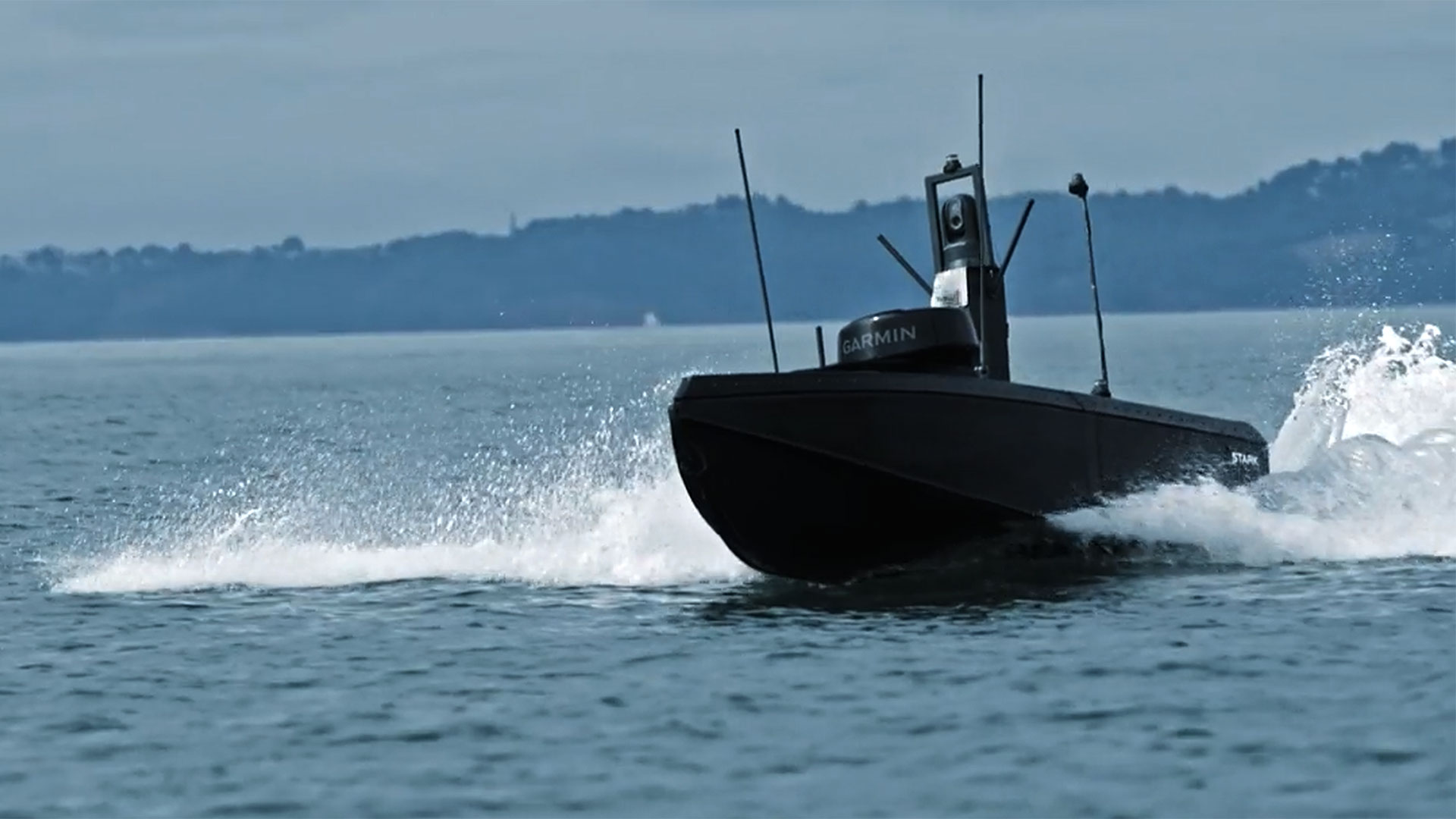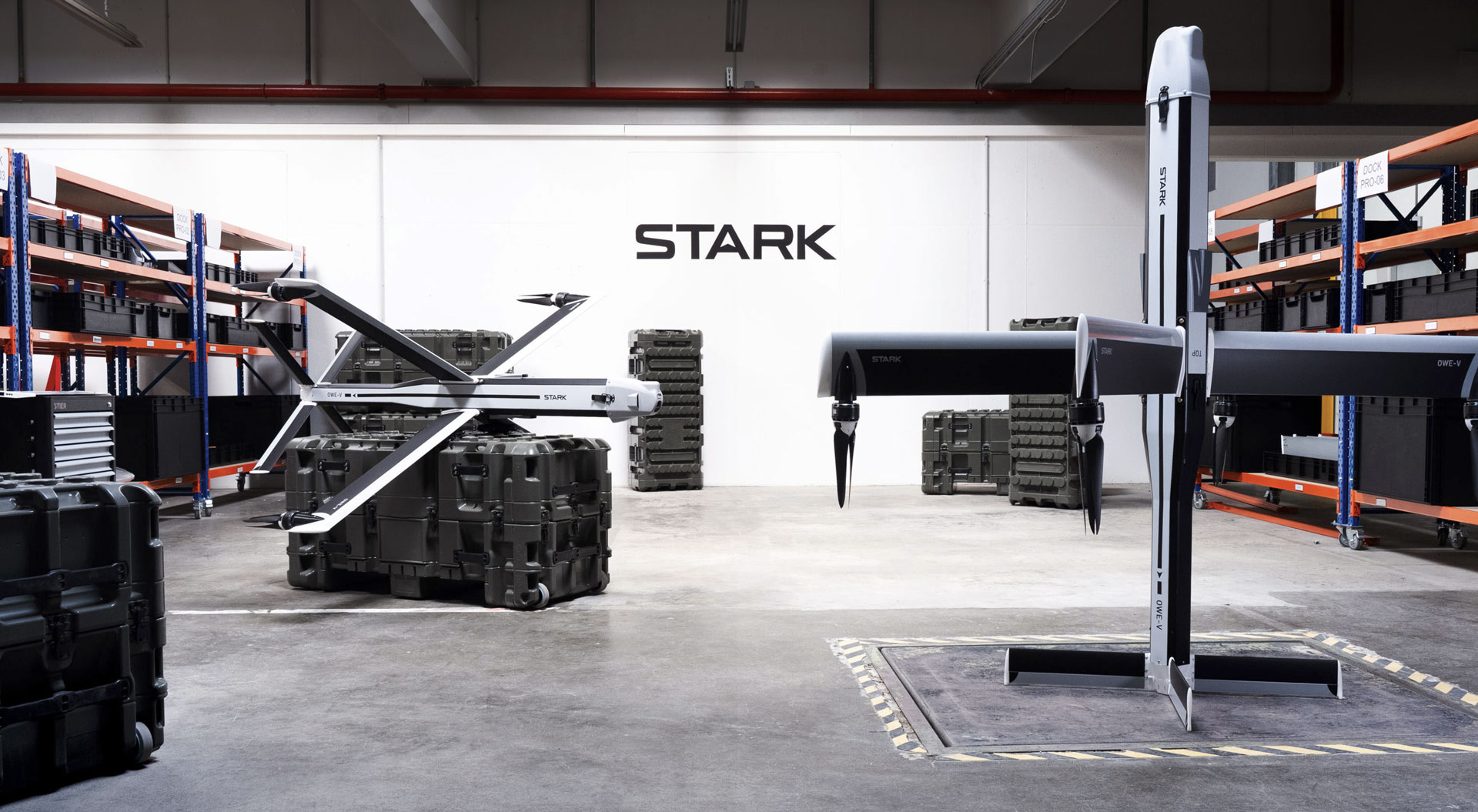Undersea cable attacks drive sea drone development — Stark's Vanta unmanned vessels could be an affordable solution to protecting vital infrastructure
Sensor-packed mass-produced craft have a range of up to 900 nautical miles (1,667 km).

Anglo-German autonomous systems specialist Stark has demonstrated its first unmanned surface vessels (USVs). You might more commonly call them sea drones, or drone boats. The new Vanta-4 and Vanta-6, pictured in stealthy black livery, were put through their paces during NATO exercises in Portuguese waters in September. Designed for affordability and mass production, these sensor-packed sea drones are touted as a great solution for monitoring vital undersea cables, which have been easy prey to the Russian shadow fleet in the Baltic.
“When undersea cables are cut, your banking stops working. When shipping lanes are blocked, grocery prices skyrocket,” said Stark International managing director Philip Lockwood. “The ocean isn’t just important to our security; it is our security. This is a domain where we simply cannot afford to leave ourselves vulnerable.”
To achieve its aims, Stark says that it intends to leverage “technological superiority and mass deployability.” And this is where the new Vanta-4 and Vanta-6 come in.
There aren’t a lot of technical details about these new sea drones to share. We know that the Vanta-4 and Vanta-6 are 4m (~13ft) and 6m (nearly 20ft) in length, respectively. Also, they are packed with advanced sensors such as electro-optics, infrared vision, and a search radar. It is indicated that they are modular, so sensors and potential payloads could be adjusted without difficulty. Their range is up to 900 nautical miles (1667 km).
Stark Vanta sea drones can work alongside traditional navy vessels, as well as in swarms with other USVs and aerial strike drones. In the recent NATO exercises, they were tested multiple times in scenarios like “escorting high-value targets, conducting harbor control operations, performing over-the-horizon investigations of contacts of interest, and carrying out nighttime intelligence, surveillance and reconnaissance (ISR) patrols,” notes our linked source, ESD.
With the recent shadow fleet sabotage of undersea internet and power cabling crossing the Baltic, such sea drones could play a part in keeping important infrastructure safe. Vanta USVs can be deployed in large numbers, affordably, to vastly expand NATO sea patrol areas, reckons the firm.

Serious backing for a serious business
Stark is a relatively new company, with its prior product portfolio consisting of a single kamikaze VTOL drone (Virtus, pictured above) and an associated drone swarm control system (Minerva). However, the company has already achieved significant backing from the likes of Sequoia Capital, 8VC, Thiel Capital, and the NATO Innovation Fund, among others. Already touting a $500m valuation, Stark has raised around $92m in funding and has offices in the UK (the production base), Munich, and Kyiv.
Get Tom's Hardware's best news and in-depth reviews, straight to your inbox.
Follow Tom's Hardware on Google News, or add us as a preferred source, to get our up-to-date news, analysis, and reviews in your feeds. Make sure to click the Follow button!

Mark Tyson is a news editor at Tom's Hardware. He enjoys covering the full breadth of PC tech; from business and semiconductor design to products approaching the edge of reason.
-
S58_is_the_goat Arm the drone boats with a shoot first ask quotations later directive. These people cutting these cables don't care so neither should the drone boats.Reply -
American2021 Better surveillance and monitoring combined with more redundancy would be a plus for the underwater cable sector. I read that "As of 2025, there are approximately 597 submarine cables in operation, which account for about 99% of international data traffic."Reply
Emphasis added on 99% of international data traffic in the world occurs across underwater cables.